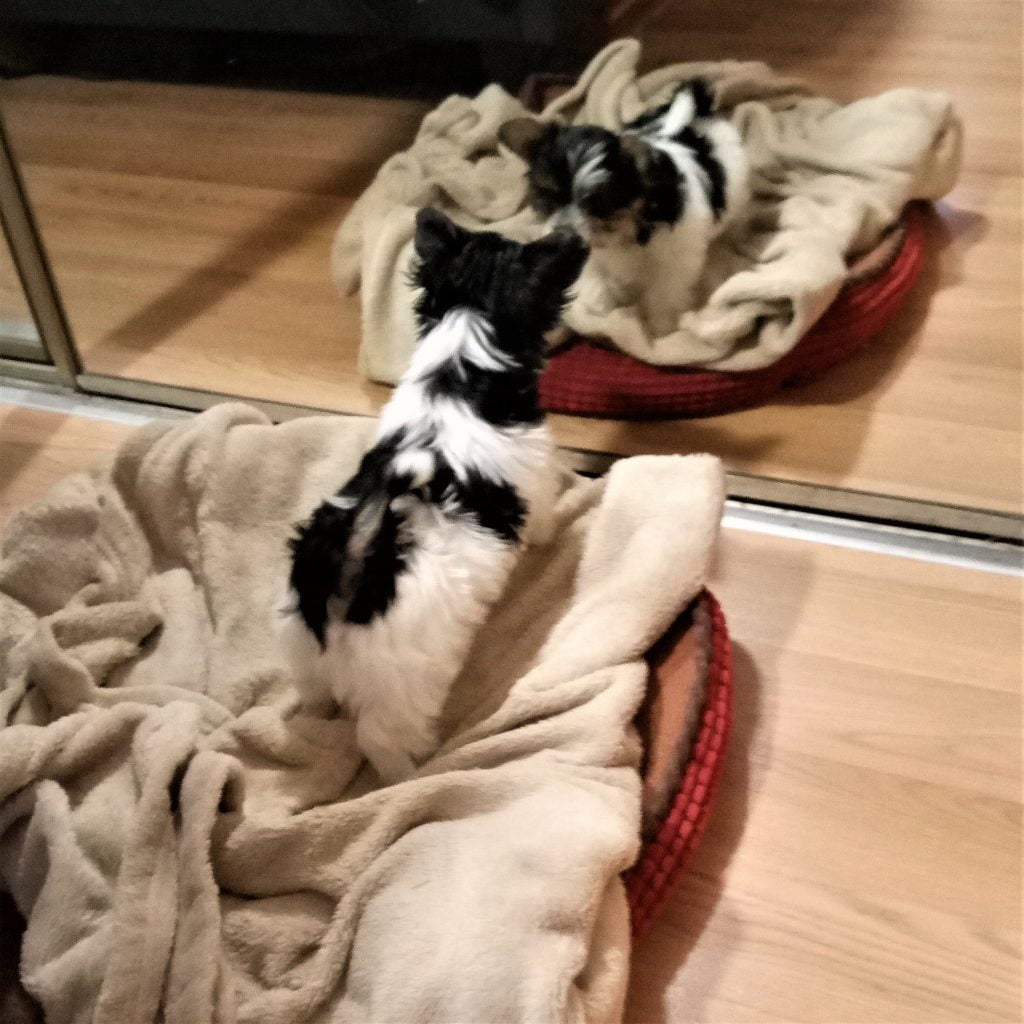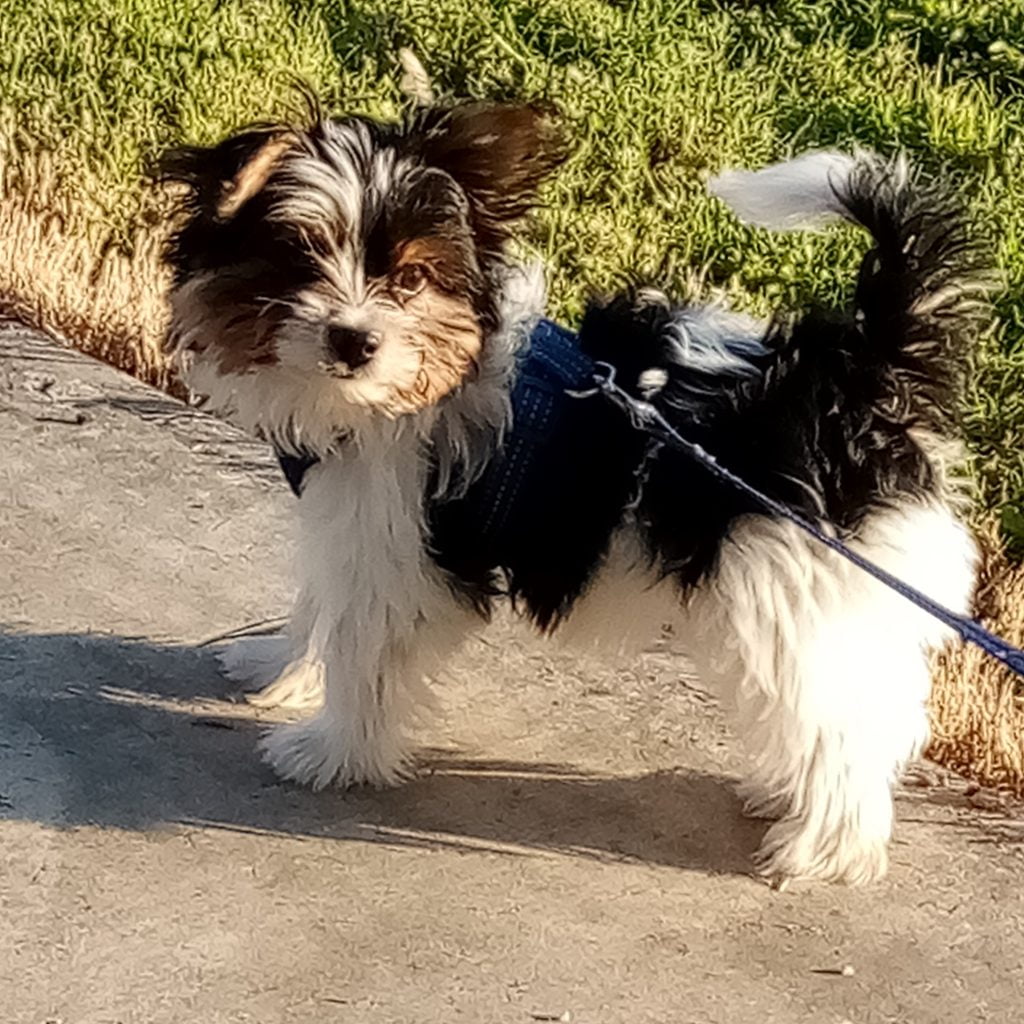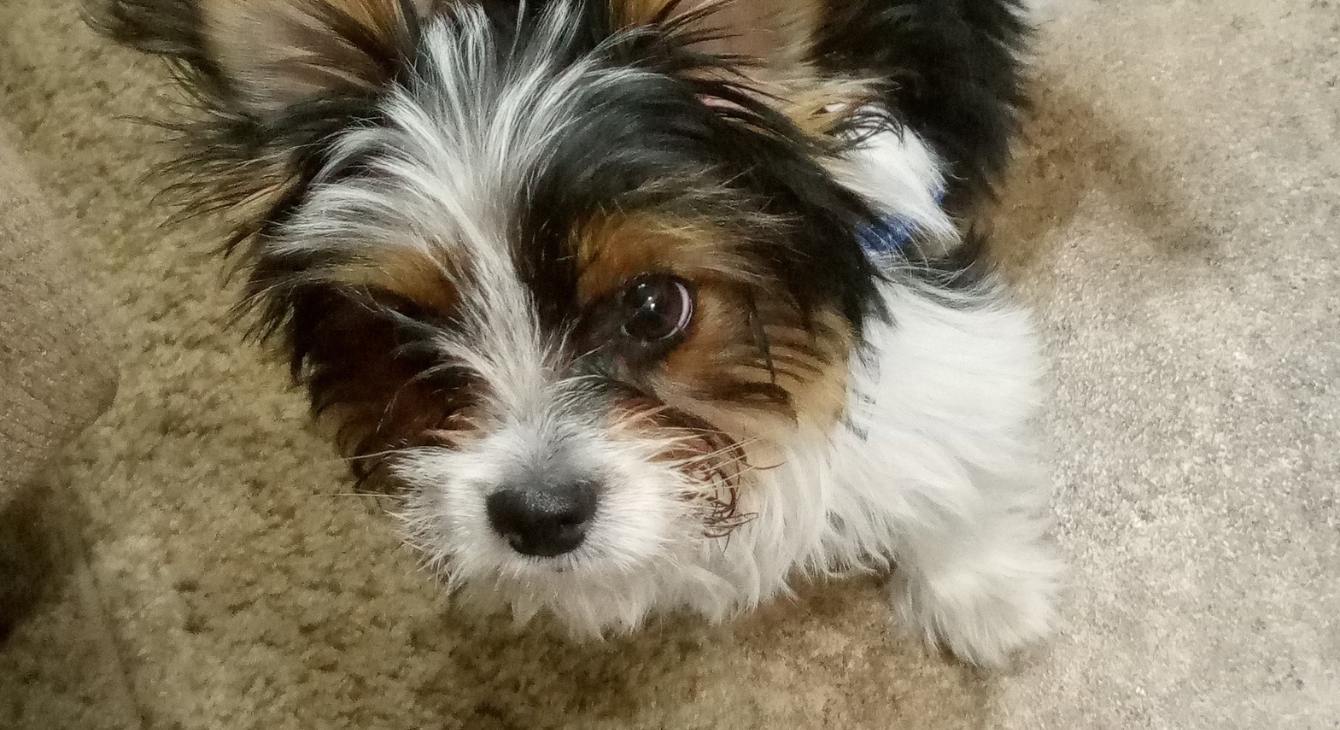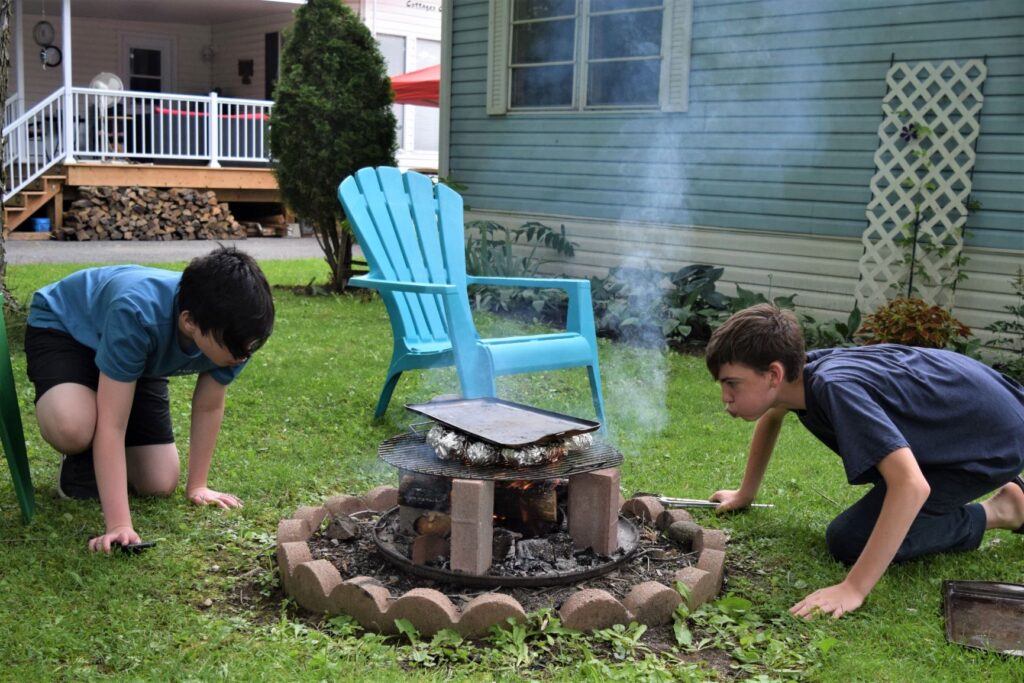Following the loss of our dog Angus in the spring, my wife Linda and I agreed to no more dogs. We still had Molly, our 13-year-old Shih Tzu, a hardened camper. Then, we heard from a friend of a friend that a litter of Yorkie puppies would be available in November. Linda’s eyes lit up. The puppies, each a two lb. ball of fur, fit into the palm of her hand. The problem? We had plans to leave Canada a few days before. After some thought, it occurred to us that we’re RVers, and one of the benefits of being an RVer is that we can leave anytime. We decided to delay our plans by a few days to pick up our new puppy and spend some time at home adjusting and getting comfortable with each other.
Bringing Hamish home and preparing our RV for a puppy
We got home our new Yorkshire Terrier puppy, Hamish, and began preparing our RV for a young puppy.

Once in the house, he went exploring. We heard the barks when he found the other dog in the bedroom mirror.
RVing with a puppy isn’t new to us. Our dogs always travel with a full harness attached to the seatbelt, but even a cat harness wouldn’t fit Hamish. We purchased a travelling crate that could be secured by the safety belt on the truck’s back seat and a dog playpen. After moving some furniture around to make room for his playpen, we were ready, we thought, for this two lb. 6 oz ball of energy.
RVing South with a new puppy
At ten weeks old, Hamish became a Snowbird, travelling south in our fifth-wheel trailer. A total of 3,500 km from the snowstorms in Kingston, Ontario, to the blistering heat, palm trees, and smell of orange blossom in Palmview, in the Rio Grande Valley (RGV), Texas. Hamish was a natural traveller, alert and interested, with no sickness or fear.

Our fifth-wheel trailer is packed and ready to leave Kingston.
Crossing the Canada/USA border with a new puppy
We crossed into the USA at the Thousand Islands Bridge, with vaccination and health records for both dogs in a folder and our passports. They asked if we had any dog food onboard and waved us through once we confirmed we were only travelling with dry food.
He cried the first night, but Linda talked to him. We arrived on the second day at Fort Chiswell RV Park, Wytheville, Virginia. We usually go to a dinner theatre here but wanted to stay in with Hamish. He was still learning as we collectively worked on puppy training. Molly demonstrated a low growl’s effectiveness, rolling Hamish onto his back. Corrective, simple, and effective. I decided I should learn to growl.

Hamish is sleeping next to Linda’s feet.
We took turns getting up with him every four hours. Molly would open one eye to ensure the situation was under control and go back to sleep. Hamish woke up one night at 4 am, and I took him out. He wanted to play. Back inside, I sat in a chair, encouraging him to chew a toy, not my fingers. I fell asleep with Hamish lying on my chest and Molly in the chair beside me.
The Toilet Paper Roll
After a walk the next morning, we started to get the trailer ready for another day. We left the door open and suddenly realized that Hamish was missing. He was not behind the furniture or under it. We thought he may have gone out the door until a head appeared under the bathroom door. It was Hamish, and he had found a toilet paper roll.
Hamish had much energy
His daily running route involved a loop around the bedroom and a leap down all three steps into the dining area. On his run, he found time to chew whatever he could find, including:
- The plug off our electric blanket
- My computer mouse
- Linda’s phone charging cable
- The inner sole of one of my sneakers
- The buttons on one of Linda’s new blouses
- Molly’s wicker toy box

Hamish, a 2lb. 6 oz—a ball of energy.
We quickly learned to put everything away and out of his reach. Molly was patient but wasn’t safe from the bundle of couped-up energy. While she lay in the elevated safety of a chair, Hamish would leap up in the air and bark in her face as he zoomed past. Molly had no chance; he could run faster, turn quicker, and fit behind and under the furniture. After a week on the road together, as we learned to anticipate the puppy’s needs, the dogs finally began to tolerate each other.
We arrived at the RV resort at 1 pm
We set up the trailer before taking the dogs for a walk in the rain. We were stopped on our walk by people who wanted to see Hamish, “Oh, what an adorable Puppy,” we were told. If only they knew.
They invited us to a street party later in the week and dinner the next day. As much as Hamish needed to burn off energy, he was restricted to the confined space of a fifth wheel and short walks until his final vaccinations.
Here are some quick tips if you’re planning on RVing with a puppy:
- Ensure your puppy is vaccinated and you’re covered for fleas and ticks.
- Get to know your puppy before you head out on the road with them. You can even try taking a few short road trips or camping trips to get them used to the lifestyle.
- If you’re crossing the border, read up on what types of dog food you can take with you, what documentation you need etc.
- When booking a campsite, make sure they’re dog friendly.
- Let them explore your RV before you leave so they can get used to the smells, sounds and layout.
- Just like at home, keep anything small or chewable out of reach and ensure you don’t leave anything lying on the floor.
- Keep the door closed! Keep doors and windows closed until you and your puppy have mastered the recall.
- Pack the essentials, including treats, food, toys, a harness or leash, a crate, and anything else a young puppy may need!
Perhaps the best tip we can give anyone planning on RVing with a puppy is to be patient and enjoy the puppy years! We knew we would overcome the tiredness of caring for a young puppy in the confined space of a fifth wheel and tried to remember to enjoy this time and experience as we created fond memories.




